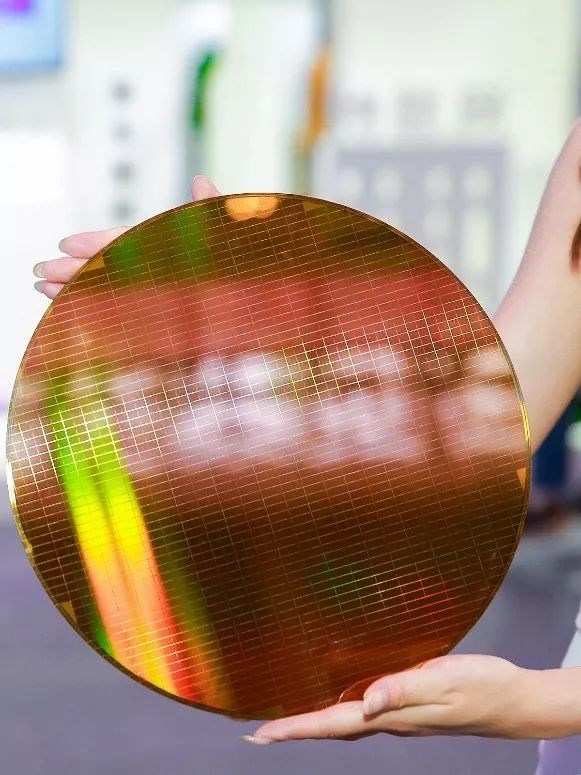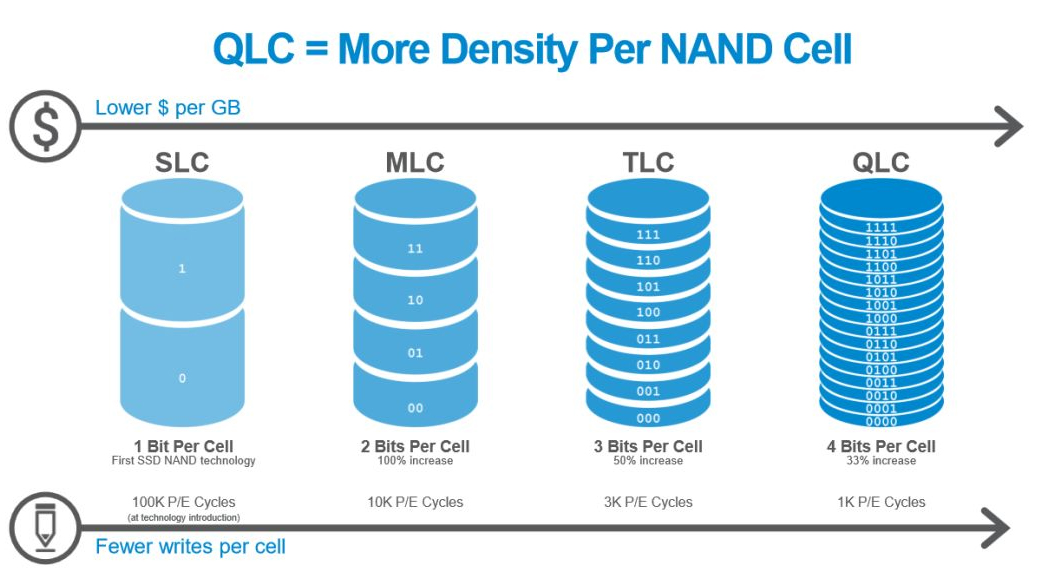New Development of Domestic Flash Memory——Yangtze River Storage's 64-layer "China Core" Launched
It is reported that the Yangtze River Storage 64-layer solid state drive is expected to be available in the third quarter of this year.
In fact, as early as early January this year, Changcun has announced to the public that its own brand 64-layer consumer-level solution products will be launched in the second half of this year.

(YMTC 64-layer 3D NAND flash memory wafer)
In early April this year, the CEO of Yangtze River Storage said in an interview that 128-layer 3D NAND technology will also be launched in 2020. Five days later, Longevity announced to the public that its 128-layer QLC 3DNAND flash memory (model: X2-6070) has been successfully developed and has been verified on terminal storage products such as SSDs from a number of controller manufacturers.

(YANGTZE X2-6070 128L QLC 1.33Tb 3D NAND)
As the first 3D NAND flash memory design and manufacturing company in China, YMTC's every move is the focus of the industry's attention.
So when it comes to NAND flash memory, how much do we know about it?
Flash memory particles NAND FLASH is an important storage medium for solid state drives, and its quality determines the quality of solid state drives.
There are four main types of common NAND flash memory:
Single Level Cell(SLC),
Multi Level Cell(MLC),
Triple Level Cell(TLC),
Quad-Level Cell(QLC)。

Before 2003, NAND FLASH with SLC architecture had always occupied a pivotal position as a leader in the storage industry. Since the emergence of Toshiba's first MLC architecture NAND Flash in February 2003, it heralded the arrival of the storage era belonging to MLC.
Although compared to SLC's longer life and greater stability, MLC is totally unmatched.
However, MLC has taken a new path in storage capacity, and successfully conquered SLC with an absolute price advantage, and has a place in the NAND FLASH storage market position, and even finally completely replaced the market position of SLC.
This result even Samsung Electronics, which used the NAND FLASH of the SLC architecture as the leading enterprise at the time, had to be impressed.
With the continuous evolution of market development requirements and the continuous strengthening of storage technology strength, TLC flash memory has begun to appear.
TLC began to be active in the market with its lower production cost and larger storage capacity. Although it cannot be compared with its predecessors SLC and MLC in terms of function and quality, it complements each other on mobile storage devices such as U disks or memory cards.
in conclusion:
From the perspective of storage capacity, SLC only stores 1 bit of data (single) per unit, the storage capacity is the worst, but the speed and life are the best, and the price is the most expensive;
MLC is 2bit (2 times), with certain improvements, speed and lifespan performance is also good, and the price is more expensive;
TLC is stronger (3 times), each unit can store 3bit data, the speed and life are average, and the price is much cheaper.
What about QLC?
From the perspective of the development process, QLC seems to have evolved under the premise of the development of TLC technology. QLC has gained a new improvement in storage capacity based on TLC, which is undoubtedly an advancement in flash memory technology.
But we all know that every technological advancement and capacity increase of flash memory has resulted in a decrease in stability and lifespan. This is also the main reason why QLC has not been listed before.
QLC flash memory is fully launched, do people in the industry buy it?
In the past few years, QLC NAND FLASH has just begun, and the industry has begun to stir up. Even in early 19th, it was estimated that QLC flash memory would account for about 1/3 of the market's production capacity. Although it will not replace TLC, QLC flash memory It is bound to cause a volatility in the market.
Although QLC's development momentum declined slightly from the end of 19th to the first half of 20th due to the "epidemic", there is still a lot of discussion on the Internet.
Most people in the industry are well aware of the "upgrade law" of NAND FLASH, so many people are not optimistic about QLC.
QLC flash memory P/E life is only 500-1000 times, so the reliability is poor?

The biggest reason for questioning QLC is its performance and reliability. People who know more about NAND FLASH should have a balance in their hearts: SLC>MLC>TLC>QLC. The price is the opposite. Considering that SLC has the best performance but has the highest price, SLC is basically rare even in the storage market today.
Due to technical principles, in terms of performance and reliability, not to mention SLC, which occupies an absolute advantage, even if compared with MLC and TLC, QLC is currently not comparable.
The problem is manifested in the number of P/E erasing and writing. From SLC's P/E times of 1 to 100,000 times, to MLC's P/E times of 5,000 to 10,000 times, even the P/E times of TLC, which ranks next in terms of performance quality, can reach about 3000 times. , And the prediction of the P/E times of QLC can only reach about 500-1000 times.
But in fact, the number of P/E is not fixed. With the advancement of flash memory technology, the number of P/E will certainly develop in a good direction.
The appearance of QLC is another advancement in terms of price, cost and capacity of memory. From the perspective of future storage market development and consumer groups, QLC may not be a better choice if it meets the requirements of most consumer storage.
① From the perspective of the development of the storage market, the rejuvenation began from 19 to 20. Although the production reduction strategies adopted by the original manufacturers such as Samsung, Micron, SK Hynix and other large enterprises still have a greater impact on the storage market, it also affects the domestic storage market.
Manufacturers including Yangtze River Storage, Ziguang and other manufacturers will further occupy the storage market share in the future and bring some vitality.
② The original factory's decision to satisfy the data center and enterprise-level needs of the original factory for market development has accelerated the launch of YMTC's 64-layer consumer-level solution products to a certain extent, and also enabled 128-layer 3D NAND. The launch space of FLASH is enlarged.
Since the first 32-layer stack 3D NAND flash memory launched by YMTC in 2017, it has now announced the mass production of 64-layer 256 Gb TLC 3D NAND flash memory based on the Xtacking architecture.
It is reported that solid-state hard drives equipped with 64-layer NAND particles have been sold online.
The successful research and development of 128-layer QLC 3DNAND flash memory (model: X2-6070) also shows that products equipped with YMTC 128-layer QLC 3DNAND flash memory will also be officially launched in the near future. Let us look forward to the rise of domestic storage business.